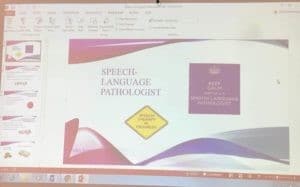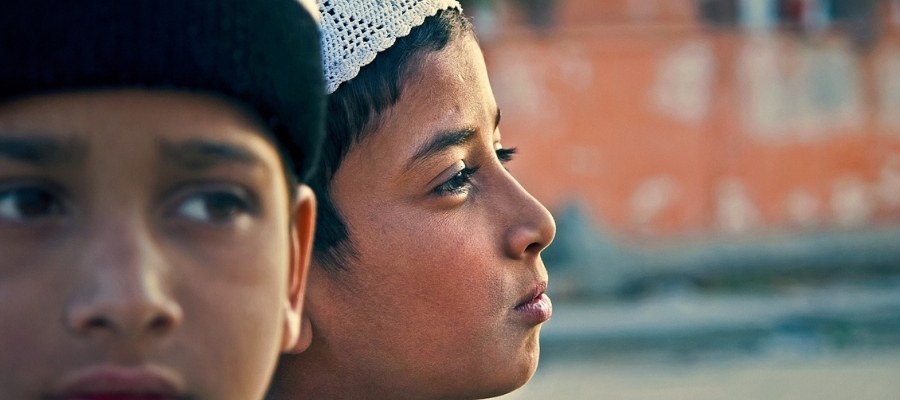Most of us are comfortable treating fluency. And many of us have our heads correctly wrapped around how to work with bilingual students. However, when we combine stuttering and bilingual development there is some overlap that we need to sort out so that keep our goals focused on communication that is truly impaired.
We know (and many of us have experienced) that when you are trying to speak in a foreign language that we “um” and “uh” and repeat words as we concentrate on trying to speak correctly.
We also know that these repetitions and interjections increase when there are more language demands. For students, this can peak around first grade. But it is also true when we are talking about stuttering and bilingual adults. Situations like new jobs with new pressures and new vocabulary or big lifetime events can cause increased repetitions.
But when does a person cross the line from this second-language acquisition tendency into disfluency?
This question came to us and we thought we would share for others to benefit.
“Hello!
I am finding your information and products very helpful as a monolingual speech-language pathologist working with students who speak one or more languages (mostly Spanish with some Somali and French).
I have a bilingual student who stutters and I wonder if you had any research or information on people who stutter in one language but not another, or both languages.
My student stutters in both languages, so I am fairly certain that he has a bona fide fluency disorder. However, what about students who stutter only in one language? Do you know if that has to do with learning a second language?”
Thank you for the question and you are spot on.
Clients who stutter do so in both languages so you are doing well to continue seeing him or her. Here is a quick response and the research citations if you need them.
“I would love the research citations if you have the time. This keeps coming up in my work.
My first student who did this stuttered not only in both languages, but typically on the same word–“because” in English and “porque” in Spanish.
Thank you for your reply and offer to send citations!”
Stuttering and Bilingualism
Bilingualism can affect stuttering in two opposing ways.
- Speakers of a new language are often disfluent and demonstrate non-stuttering like disfluencies, such as interjections and revisions, because they are working really hard to get their precise message conveyed. These speakers are fluent in their native language and produce some disfluencies in their second language. This is akin to being more disfluent when we are up on a stage.
- Conversely, people who stutter are often more fluent in their second language because of the preciseness and amount of cognitive effort it takes to speak the second language. However, when a person becomes more “fluent” in their second language and spend less cognitive effort on preciseness, their stuttering can emerge in the new language. This is a bit like letting our guard down.
Stuttering-like disfluencies in both languages is the definite qualification. And there is an added benefit as far as bilingual speech therapy for stuttering goes: If a child can successfully demonstrate a shaping or modification technique in one language, I have found that he can generalize it over to his other language.
Here are some great citations and resources on bilingualism and stuttering
- Dr. Courtney Bird is a great researcher at the University of Texas in Austin. Check out her article on stuttering and bilingual development: Identification of Stuttering in Bilingual Spanish–English-Speaking Children
- Stuttering and the Bilingual Child: This is a stuttering foundation bilingual trifold.
- Myths about Bilingual Stuttering: An article by Patricia M. Roberts, Ph.D., CCC-SLP, SLP(C)
- Assessment and Treatment of Bilinguals Who Stutter: Facts for Bilingual and Monolingual SLPs
- Patterns of stuttering in a Spanish/English bilingual: An article by: Perspectives of the ASHA Special Interest Groups
- Fluency Strategies for Spanish–English Bilinguals Who Stutter: An article by: Perspectives of the ASHA Special Interest Groups
- Spanish translation of Stuttering and the Bilingual Child: La tartamudez y los niños bilingues
Being a bilingual SLP, there is also some overlap for me because it was stuttering that began my journey into this field and I wanted to share.
How Stuttering Gifted Me Speech-Language Pathology
We met in 1990 as sixth graders. Adolescent hormones reigned, and my peers were already talking about the “new cute boy” before he entered our first period class. Coincidentally, as he began talking, sentiments quickly changed. The new kid stuttered, and middle school is a hotbed of cruelty. Luckily, as a self-proclaimed academic zealot, I had no time for such juvenile, superfluous endeavors. So, Lance and I became friends. Our relationship granted me someone who would laugh at my jokes, a partner in consuming chips and salsa at Taco Delite, and the first exposure to my profession as a speech-language pathologist. When I decided to become an SLP, he gifted me with a handmade pacing board.
I’ve Got Stuttering All Wrong
Stuttering got me into the world of communicative disorders. Upon entry into the vast world of bilingual speech-language pathology, stuttering would only show up intermittently. In college, I learned about stuttering modification theories to reduce dysfluency rate, physical tension, and secondary characteristics. Truth be told, with few students/clients with fluency needs on my caseload, it became an arena that brought me anxiety.
I was surely not an expert in this arena, and I wasn’t sure I agreed with the strategies. A part of this ache felt like I was cheating on my profession–my human heart felt “not okay” solely working on fluency.
Then, my SLP world had an awakening when I heard Nina Reeves speak at a conference. She did not just focus on (overrated and unrealistic) fluent speech. She enthusiastically sung the praises of the entire human being (!)–the feelings and attitudes (Affective); the avoidance, tension, struggle (Behavior); and thoughts, self-evaluation (Cognitive).
Stuttering Superpowers
Soon after I was asked to cover a middle school caseload. A sixth-grader who loved the WNBA. Brittney Griner of the Phoenix Mercury was her shero…only second to her mother. She was also a person who stuttered.

Her eyes rarely met another person’s eyes, she did not speak in class and a whispered “I don’t know” was given when asked a question. With my newfound stuttering knowledge in my SLP brain and permission to use my humanity to support the whole Margo, we got to work. Margo kept a journal with her thoughts about her stuttering. She made a “1-10” Empowerment Scale to track her feelings regarding her communication strategies. By the end-of-year, she self-advocated, initiated answering questions in class, gave herself a score of 9 on her Empowerment Level and mastered her goal of doing a presentation with a self-selected audience on her future profession.

I was excited to be invited to her chat on becoming a basketball player. As she began her PowerPoint, I quickly realized that she changed her mind. I quizzically looked at her. She easily stuttered, “I want to be a speech-language pathologist. I want to be you. I want to empower people.” My heart burst as I listened to her go through her five slides for the next 45 minutes. SLP-priceless.
Additional Research on Stuttering and Bilingual Development
- Lim and colleagues (2008) found that Mandarin-English bilinguals who stuttered exhibited similar rates of stuttered syllables across their two languages if their proficiency was relatively equal in both languages. If they had lower proficiency in one of the languages, they had higher rates of stuttered syllables and a higher level of perceived severity in the language with lower proficiency.
- Lim, V. P., Lincoln, M., Chan, Y. H., & Onslow, M. (2008). Stuttering in English–Mandarin bilingual speakers: The influence of language dominance on stuttering severity. Journal of Speech, Language, and Hearing Research, 51(6), 1522-1537.
- Howell and colleagues (2009) reported that, in a group of 38 bilingual children who stuttered, 94.7% of them stuttered in both languages. They also found that age at stuttering onset was similar for sequential bilinguals, simultaneous bilinguals and monolinguals (4 years 9 months, 4 years 10 months and 4 years 3 months, respectively). Similarly, male/female ratio was similar for the similar for sequential bilinguals, simultaneous bilinguals and monolinguals (4.1:1, 4.75:1 and 4.43:1, respectively).
- Howell, P., Davis, S., & Williams, R. (2009). The effects of bilingualism on stuttering during late childhood. Archives of disease in childhood, 94(1), 42-46.
Thank you to Katrina V. for a great question.


